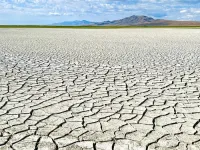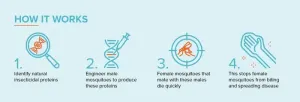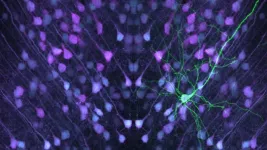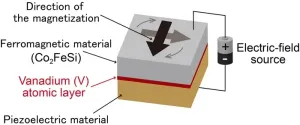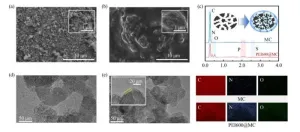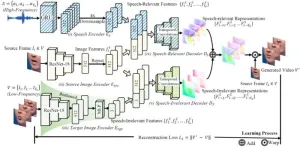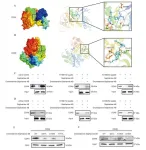(Press-News.org) CORVALLIS, Ore. – The Great Salt Lake has lost more than 15 billion cubic yards of water over the past three decades, is getting shallower at the rate of 4 inches a year, and an analysis of its water budget suggests reducing irrigation is necessary for saving it.
The study published today in Environmental Challenges shows that 62% of the river water bound for the lake is diverted for human uses, with agricultural activities responsible for nearly three-quarters of that percentage.
“The research highlights the alarming role of water consumption for feeding livestock in driving the lake’s rapid depletion,” said co-author William Ripple, distinguished professor of ecology at Oregon State University, who notes that 80% of agricultural water use is for irrigating alfalfa and hay crops.
To stabilize the lake and begin refilling it, the authors propose cutting human water consumption in the Great Salt Lake watershed by 35%, including a reduction in irrigated alfalfa production, a fallowing of much of the region’s irrigated grass hay fields and taxpayer-funded compensation for farmers and ranchers who lose income.
“The lake is of tremendous ecological, economic, cultural and spiritual significance in the region and beyond,” said Ripple, a member of OSU’s College of Forestry. “All of those values are in severe jeopardy because of the lake’s dramatic depletion over the last few decades.”
The authors used data from the Utah Division of Water Resources to build a detailed water budget for the Great Salt Lake basin for the years 1989 through 2022. On average, inputs to the lake – river inflows and precipitation – during the study period lagged behind consumption and evaporation at the rate of 500 million cubic yards per year.
The water budget has been in a deficit situation for much of the past 100 years and the numbers have worsened with climate change and drought, the authors say.
“Abnormally large snowmelt inflow during the 1980s and 1990s served to temporarily obscure the long-term decline in lake levels, and the lake actually reached its highest level in more than a century in 1987,” Ripple said. “But it has been dropping by roughly 4 inches per year on average since then.”
The Great Salt Lake, which has no outlet, is the largest saline lake in the Western Hemisphere and the eighth largest in the world. Its 21,000-square-mile drainage basin includes the Wasatch Mountains, whose snowfall accounts for much of the basin’s water replenishment.
A biodiversity hotspot, the lake sustains more than 10 million migratory birds and 350 bird species. Declining lake levels threaten critical habitats and could disrupt food webs, Ripple said.
The lake directly supports 9,000 jobs and annually fuels $2.5 billion in economic activity in the form of recreation, mining and brine shrimp harvesting, the paper points out. It’s the world’s largest supplier of brine shrimp eggs, a food source that underpins global aquaculture, but as the lake shrinks and salinity increases, the shrimp become physiologically stressed and don’t produce as well.
Also as the lake gets smaller, human health risk grows in the form of wind-carried dust from the exposed saline lakebed, or playa. Five percent of the Great Salt Lake playa is fine particulate matter that can enter the lungs and cause a range of pulmonary problems, and particularly troublesome, the scientists say, is the presence of toxic heavy metals, residues of the region’s history of mining, smelting and oil refining.
Depending on which conservation measures are deployed – including crop shifting, reducing municipal and industrial use, and leasing water rights from irrigators – the authors propose that farmers and ranchers who lose income from using less water could be compensated at a cost ranging from $29 to $124 per Utah resident per year. The state’s population is 3.4 million.
“Revenues from growing both irrigated alfalfa and grass hay cattle feed in the Great Salt Lake basin account for less than 0.1% of Utah’s gross domestic product,” Ripple said. “But our potential solutions would mean lifestyle changes for as many as 20,000 farmers and ranchers in the basin.”
In that regard, he adds, the Great Salt Lake area exemplifies the socio-cultural changes facing many river basin communities in the West and around the world, where climate change is sending many water budgets into deficit status.
“The economic and cultural adjustments required are significant but not insurmountable,” said Ripple. “With the right policies and public support, we can secure a sustainable future for the Great Salt Lake and set a precedent for addressing water scarcity globally.”
Collaborating with Ripple on the paper was an interdisciplinary team of scientists from Northern Arizona University, Utah State University and Virginia Tech; the Utah Agricultural Experiment Station; and Sustainable Waters, a New Mexico-based nonprofit focusing on global water education.
The National Science Foundation and the Utah Agricultural Experiment Station provided funding.
END
Reducing irrigation for livestock feed crops is needed to save Great Salt Lake, study argues
2025-01-07
ELSE PRESS RELEASES FROM THIS DATE:
Clean energy tax credit safeguards could save taxpayers $1 trillion
2025-01-07
A new study published today in IOP Publishing’s journal Environmental Research: Energy shows why new safeguards adopted by the U.S. Treasury Department are necessary to avoid substantial climate impacts and wasted taxpayer resources from a generous hydrogen production tax credit.
The new study illustrates how, absent safeguards, hydrogen producers could potentially claim the highest level of tax credits ($3 per kilogram) for producing "gray" hydrogen from fossil natural gas, by blending in small amounts of biomethane or waste methane. ...
New genetic biocontrol breakthrough offers hope against disease-carrying mosquitoes and agricultural pests
2025-01-07
A revolutionary new biological pest control method that targets the lifespan of female insects could significantly reduce the threat of insect pests such as disease-carrying mosquitoes by offering faster and more effective results than current methods.
Described today in Nature Communications, the technique developed by researchers in Applied BioSciences and the ARC Centre of Excellence in Synthetic Biology at Macquarie University is a new approach called the Toxic Male Technique (TMT).
It works by genetically engineering male insects to produce insect-specific venom ...
Sex differences in brain structure present at birth
2025-01-07
Sex differences in brain structure are present from birth, research from the Autism Research Centre at the University of Cambridge has shown.
While male brains tended to be greater in volume than female brains, when adjusted for total brain volume, female infants on average had significantly more grey matter, while male infants on average had significantly more white matter in their brains.
Grey matter is made up of neuron cell bodies and dendrites and is responsible for processing and interpreting information, ...
UCLA scientist unlocks early warning signs of adolescent psychosis through genetics
2025-01-07
LOS ANGELES, California, USA, 7 January 2025 - In a comprehensive Genomic Press Interview, Dr. Carrie E. Bearden, Professor of Psychiatry and Biobehavioral Sciences and Psychology at UCLA, shares transformative insights into the neurobiology of psychosis risk in young people. Her work represents a significant advance in understanding how genetic factors and brain development interact to influence mental health outcomes in adolescents.
Growing up in Hawaii, Dr. Bearden's early fascination with mysteries and marine biology evolved into a passionate pursuit of neuroscience's greatest ...
Research reveals unique features of brain cells linked to neurodevelopmental conditions
2025-01-07
7 January 2025, Leuven – Specific brain cells known as layer 5 pyramidal neurons play a vital role in how our brains process information. Research by the team of Prof. Joris de Wit (VIB-KU Leuven) and colleagues highlights the differences between two types of these brain cells —intratelencephalic (IT) neurons and pyramidal tract (PT) neurons—and how these differences may affect their vulnerability to conditions like autism and schizophrenia.
Profiling synapses
Among the neural circuits that let our brain process information, brain cells known as layer 5 pyramidal neurons integrate information from various sources ...
Smarter memory: next-generation RAM with reduced energy consumption
2025-01-07
Osaka, Japan – Numerous memory types for computing devices have emerged in recent years, aiming to overcome the limitations imposed by traditional random access memory (RAM). Magnetoresistive RAM (MRAM) is one such memory type which offers several advantages over conventional RAM, including its non-volatility, high speed, increased storage capacity and enhanced endurance. Although remarkable improvements have been made to MRAM devices, reducing energy consumption during data writing remains a critical challenge.
A study recently published in Advanced Science by researchers from Osaka University proposes a new technology for MRAM ...
Core-membrane microstructured amine-modified mesoporous biochar templated via ZnCl2/KCl for CO2 capture
2025-01-07
In the ongoing battle against climate change, reducing carbon dioxide (CO2) emissions remains a critical challenge. A recent study published in the journal Frontiers in Energy presents a significant breakthrough in CO2 capture technology through the development of a novel biochar material. This research, conducted by a team from Shanghai Jiao Tong University, introduces a core-membrane microstructured amine-modified mesoporous biochar, offering a promising solution for efficient CO2 capture.
The increasing concentration of CO2 in the atmosphere ...
Audio-guided self-supervised learning for disentangled visual speech representations
2025-01-07
Learning visual speech representations from talking face videos is an important problem for several speech-related tasks, such as lip reading, talking face generation, audio-visual speech separation, and so on. The key difficulty lies in tackling speech-irrelevant factors presented in the videos, such as lighting, resolution, viewpoints, head motion, and so on.
To solve the problems, a research team led by Shuang YANG publishes their new research on 15 December 2024 in Frontiers of Computer Science co-published by Higher Education ...
From logs to security: How process analysis is transforming access control
2025-01-07
Researchers at the University of Electro-Communications have developed a groundbreaking framework for improving system security by analyzing business process logs. This framework focuses on ensuring that role-based access control (RBAC) rules-critical to managing who can access specific system resources-are correctly implemented. Noncompliance with these rules, whether due to error or malicious activity, can result in unauthorized access and pose significant risks to organizations.
RBAC is a widely used access control model that relies on predefined roles assigned to users. However, as business processes become more complex, ensuring ...
Dronedarone inhibits the proliferation of esophageal squamous cell carcinoma through the CDK4/CDK6-RB1 axis in vitro and in vivo
2025-01-07
Esophageal squamous cell carcinoma (ESCC) is a severe health threat, being a predominant subtype of esophageal cancer and contributing significantly to cancer-related mortality globally. Despite advancements in combination therapies, patient prognosis remains poor, highlighting an urgent need for novel treatment strategies. In this context, a study explores the potential of dronedarone, an FDA-approved drug, in inhibiting ESCC proliferation through the CDK4/CDK6-RB1 axis, both in vitro and in vivo. The research reveals that dronedarone, ...
